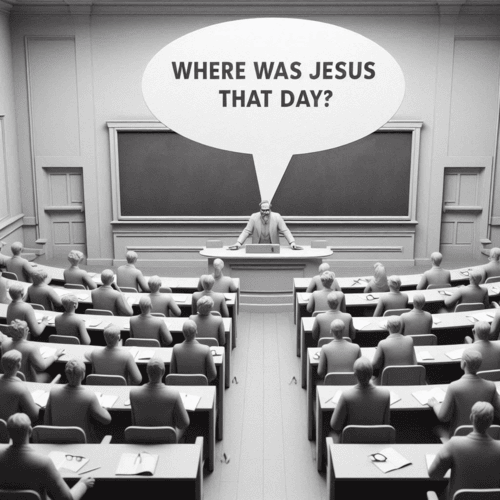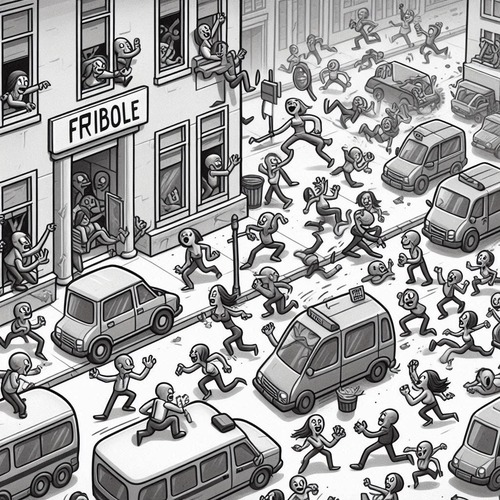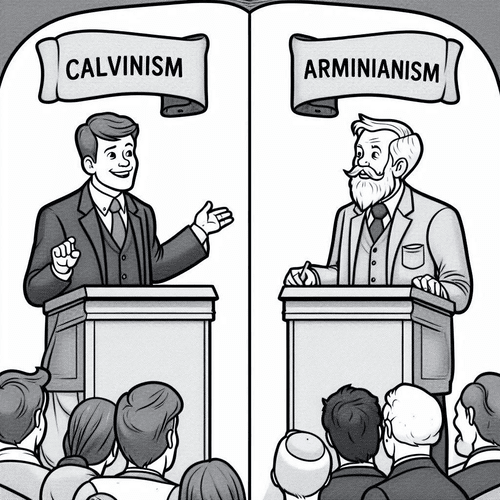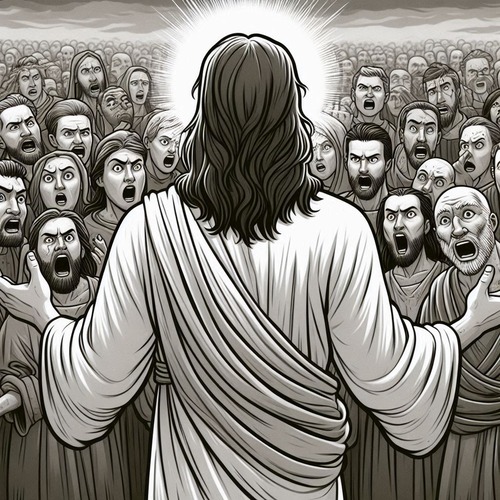Where Was Jesus Between Good Friday and Easter? A Biblical Answer
Exploring Holy Saturday from a Reformed Perspective
The period between Good Friday and Easter Sunday—often called Holy Saturday—raises intriguing theological questions: Where was Jesus after His death? What happened to His body and soul? While the Bible offers some answers, these passages have been debated and interpreted in a variety of ways. Join us as we explore from a Reformed perspective where Jesus was during this period…
Where was Jesus Between Good Friday and Easter?—What Scripture Says
- Luke 23:43—”Today, You Will Be with Me in Paradise”: On the cross, Jesus assured the repentant thief, “Today you will be with me in paradise.” This promise reveals that Jesus’ soul was in paradise—commonly understood as the immediate presence of God. For believers, this reinforces the hope of being with Christ upon death.
- 1 Peter 3:18-20—Preaching to the Spirits in Prison: Peter writes Jesus was “made alive in the spirit” and went to proclaim victory to the “spirits in prison.” While some interpret this as Jesus descending into hell, the Reformed Calvinist view sees this as Christ proclaiming His triumph over sin and death, not offering salvation to the damned.
- Ephesians 4:9-10—”He Descended to the Lower Regions”: Paul’s mention of Christ descending to the “lower regions” can be understood as His incarnation and death, rather than a literal descent into hell. This descent culminates in His exaltation, symbolising His complete victory over sin and death.
- Psalm 16:10 and Acts 2:27—”You Will Not Abandon My Soul to Sheol”: These passages prophesy Jesus’ death and resurrection. They affirm that while Jesus truly died, He was not abandoned to decay or spiritual separation. His resurrection demonstrates God’s faithfulness in vindicating His Son.
The Apostles’ Creed: “He Descended Into Hell”
The phrase “descended into hell” has sparked much debate. In Reformed theology, this descent is understood metaphorically. Jesus bore the full wrath of God for our sins on the cross (Matthew 27:46), completing His atoning work before His death. The “hell” He descended into was the spiritual agony of separation from God, not a physical place after His death.
Where Was Jesus’ Body and Soul?
- Jesus’ Body: Resting in the Tomb Jesus’ burial fulfilled prophecy (Isaiah 53:9) and testified to the reality of His death. His body lay in Joseph’s tomb, awaiting the resurrection. This period emphasises the completeness of His human experience, including physical death.
- Jesus’ Soul: In Paradise: As Luke 23:43 indicates, Jesus’ soul was in paradise, united with the Father. This aligns with the Reformed view that Jesus completed His redemptive work on the cross, and His soul experienced communion with God while His body rested.
Theological Implications of Holy Saturday
- Substitutionary Atonement Is Complete: Jesus’ declaration, “It is finished” (John 19:30), signifies the completion of His atoning work. The wrath of God was fully satisfied on the cross, leaving no need for further suffering after death.
- Christ’s Victory Proclaimed: Holy Saturday symbolises Christ’s victory over death and sin. His “descent” is not a continuation of suffering but a proclamation of His triumph, preparing the way for resurrection glory.
- Assurance for Believers: The events of Holy Saturday assure believers that death has been defeated. Just as Jesus’ soul went to paradise, so too will the souls of believers be with Him immediately upon death.
Where was Jesus Between Good Friday and Easter?—Addressing Misinterpretations
Did Jesus go to hell? No. The idea of Jesus descending to a literal hell is inconsistent with Scripture and Reformed theology. His descent refers to the spiritual agony of the cross and His burial, not a physical journey after death. Jesus bore the full wrath of God on the cross, as evidenced by His cry, “My God, My God, why have You forsaken Me?” (Matthew 27:46). His suffering was complete at His death; there was no further punishment to endure after His body lay in the tomb.
Does 1 Peter 3:18-20 suggest a second chance for salvation? No. Reformed theology rejects the notion of post-mortem salvation (Hebrews 9:27). The “spirits in prison” likely refer to fallen angels or those who perished in Noah’s day, to whom Christ proclaimed His victory.
Does Ephesians 4:9-10 Mean Christ Went to Hell? No. The “lower regions” refer to the earth itself—Christ’s incarnation and death—underscoring His humility and obedience.
Practical Applications for Believers
- Hope in Death: Holy Saturday assures believers that death is not the end. For those in Christ, to be absent from the body is to be present with the Lord (2 Corinthians 5:8).
- Confidence in Christ’s Finished Work: Knowing that Christ’s work was completed on the cross brings assurance that our salvation is secure. There is no condemnation for those in Christ (Romans 8:1).
- Anticipation of Resurrection: As Christ rose bodily from the grave, so too will believers experience bodily resurrection. Holy Saturday reminds us to await this glorious hope with confidence.
Conclusion: The Majesty of Holy Saturday
The period between Jesus’ death and resurrection is not a mystery to be feared but a profound testimony to His finished work and victory over sin. For believers, Holy Saturday reminds us that Christ’s death secured our redemption, His burial testified to His humanity, and His resurrection guarantees our eternal hope.
Where was Jesus Between Good Friday and Easter?—Related FAQs
What is the Reformed/Protestant view about where Jesus was between His death and resurrection? The Reformed view teaches Jesus’ body lay in the tomb, while His soul entered paradise to be with the Father, as He assured the thief on the cross in Luke 23:43. This interpretation emphasises Christ’s suffering for sin was completed on the cross when He declared, “It is finished” (John 19:30). The phrase “He descended into hell” in the Apostles’ Creed is understood metaphorically—as referring to Christ enduring God’s wrath for humanity’s sin during His crucifixion, not a literal descent after death.
- What is the Roman Catholic view and the supporting Scripture! about where Jesus was between His death and resurrection? The Roman Catholic view often interprets Christ’s descent as a journey to the “limbo of the fathers” (or Abraham’s bosom) to free the righteous who died before His crucifixion and open heaven for them. Passages such as 1 Peter 3:18-20 and Ephesians 4:9-10 are interpreted as Christ proclaiming victory and leading captives to freedom. It aligns with Catholic doctrines that emphasise the necessity of Christ’s descent to complete His redemptive work.
- What is the Eastern Orthodox perspective and the supporting Scripture? Eastern Orthodoxy teaches that Jesus descended into Hades to defeat death and liberate the righteous dead, a theme central to its Holy Saturday liturgy. 1 Peter 3:19 and Ephesians 4:9-10 are interpreted as Jesus’ triumphant entry into the realm of the dead. Orthodox theology emphasises Christ’s cosmic victory over sin, death, and the devil, symbolised by His breaking the gates of Hades and freeing humanity from its bondage.
Did Jesus literally go to Hell? Reformed theology rejects the idea that Jesus literally went to hell, the place of eternal torment for the wicked. Instead, the “descent into hell” is understood figuratively, referring to Christ bearing the full weight of God’s wrath on the cross. By the time of His death, Jesus’ redemptive work was complete, and His soul entered paradise, not a literal hell (Luke 23:43).
- How is the Reformed view different from other interpretations? The Reformed view differs by rejecting a literal descent into hell or Hades and emphasizing that Christ’s redemptive suffering occurred entirely on the cross. In contrast, Roman Catholic and Eastern Orthodox interpretations often include Christ descending to free the righteous dead or to proclaim victory in Hades. The Reformed view focuses on the sufficiency of Christ’s atonement and His immediate presence with the Father after death.
- What scriptural evidence supports the Reformed interpretation? Key verses supporting the Reformed interpretation include Jesus’ words to the thief on the cross, “Today you will be with me in paradise” (Luke 23:43), which indicate His soul went to heaven, not hell. John 19:30 declares the completeness of His redemptive work with the phrase, “It is finished.” Additionally, passages like Hebrews 9:27 and 2 Corinthians 5:8 affirm that believers (and Christ) enter God’s presence upon death without further suffering or waiting.
Why is the Reformed interpretation important? The Reformed interpretation upholds the sufficiency of Christ’s atonement, emphasising He bore God’s wrath for sin fully on the cross, leaving nothing undone. This view provides assurance to believers that salvation is complete and not dependent on additional actions after death. It also reinforces the immediacy of entering God’s presence upon death, as exemplified by Jesus Himself, which is foundational for Christian hope.
Where was Jesus Between Good Friday and Easter?—Our Related Posts
Editor's Pick
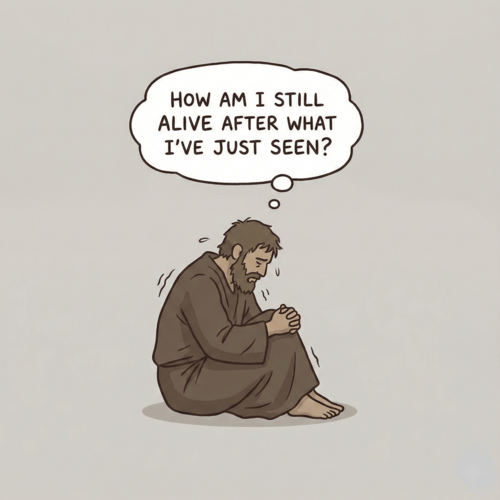
The Throne-Room Vision: Who Did Isaiah See?
The scene is unforgettable: Isaiah stands in the temple, and suddenly the veil between heaven and earth tears open. He [...]
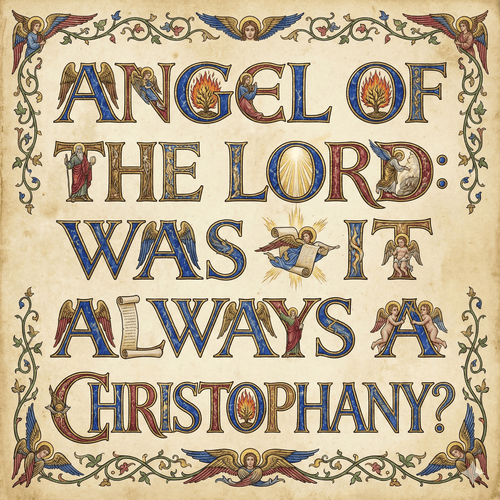
The Angel of the Lord: Can We Be Certain It Was Christ All Along?
Throughout the Old Testament, a mysterious figure appears: the Angel of the LORD. He speaks as God, bears God’s name, [...]
SUPPORT US:
Feel the Holy Spirit's gentle nudge to partner with us?
Donate Online:
Account Name: TRUTHS TO DIE FOR FOUNDATION
Account Number: 10243565459
Bank IFSC: IDFB0043391
Bank Name: IDFC FIRST BANK


